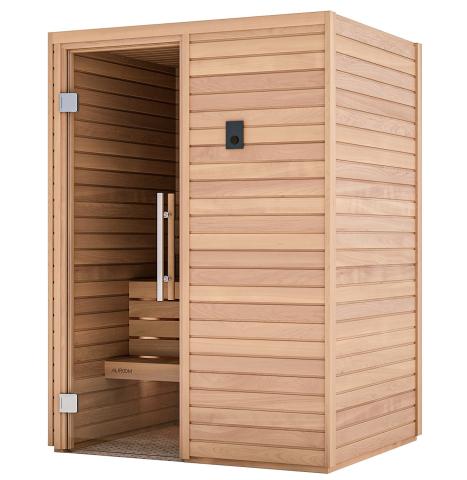Traditional Sauna for Dummies
Wiki Article
Traditional Sauna Things To Know Before You Get This
Table of ContentsThe Greatest Guide To Traditional SaunaTraditional Sauna - QuestionsUnknown Facts About Traditional SaunaWhat Does Traditional Sauna Mean?
Most of the weight shed in a sauna is water loss and is re-gained upon rehydrating. Without an uncertainty sauna can be a crucial component of a healthy and balanced weight loss program. To take a look at the distinctions between conventional and IR saunas, I will separate these into proven, theoretical, and produced distinctions.Hence, the most popular point in the saunawhich goes to the ceiling straight above the sauna heateris generally between 185 and 190 F. Traditional Sauna. Claims that a conventional sauna goes beyond 200 F is just not true and not appropriate for electric saunas offered in the United States. The temperature for a far-infrared sauna is generally established in between 120 and 140 F; nonetheless, unlike the conventional sauna, the objective in and IR room is not to accomplish a high temperature level
Because of this, the temperature level distinction is practically pointless, because profuse sweating causes both sauna kinds, however the technique of warming the body is various. In an IR sauna the bather will really feel hot and will certainly sweat profusely, yet at a lot reduced temperatures. Hence, if the objective is to spend longer durations of time in the sauna, the IR sauna is a good selection.

Everything about Traditional Sauna
When the heat is accomplished, the elements cycle on and off to maintain the high temperature. Many traditional sauna individuals enjoy putting water over the rocks to create steam to elevate sauna moisture degrees. The advantages of pouring water over the rocks include: making the area extra comfortable, dampening the nasal passages, and enabling the use of aromatherapy by blending vital oils with the water.In a far-infrared sauna, the warm front penetrate the body to properly warm the body and elevate the body core temperature level. To achieve this enhanced temperature level, Far-infrared emitters develop infrared energy which is close to the very same wavelength as that which the body naturally emitsoften referred to as the "Vital Array" of 7 to 14 microns), so the power is well obtained by the body.
When the power gets in the body, it creates the body temperature to boost and ultimately causes sweat. In an infrared sauna it is very important for the emitters/heaters to remain on almost frequently. Since there is no mass of rocks to retain warmth, the sauna will certainly cool if the emitters shut down.
As pointed out above, the sauna bather in an infrared space intends to position himself in front of operating emitters to obtain optimal benefit from the warmth. The heating time for both areas can be very different, depending on how the areas are utilized. For a traditional sauna, a bather ought to allow 30-40 mins for the area to attain a wanted temperature level and see it here to properly pre-heat the rocks.
How Traditional Sauna can Save You Time, Stress, and Money.
A well constructed sauna will normally accomplish a temperature level of 150-160 F in concerning 30-40 mins. For hotter temperatures, the room may need to heat for a longer period.To some, 15 my site mins was "lost" while the infrared power heated the timber panels instead of heating a body, while others find a pre-heated area to be extra comfortable and think a raised beginning temperature is required to begin sweating. The length of advised use for each and every area is approximately the exact same (10-15 mins per session); however, as a result of the lower air temperature levels and the capability to feel the results of infrared warmth faster than a traditional sauna, it is not unusual for a person to invest an overall of 20-30 mins in an infrared sauna.
Conventional saunas have a tendency to be larger (hence use more electrical power) than infrared saunas, although conventional saunas are certainly available in one and two person sizes. For a two-person traditional sauna, 5x6 or 5x7 dimension is most preferred. The leading bench can easily seat two or 3 people and is additionally long enough to relax throughout the sauna session.


The typical price per kWH of electrical power in the united state is around $0.11, so a 4.5 kW heating unit will set you back roughly $.50 to compete one hour, if the heating system runs continuously for one hour. Normally a sauna heater will run for 75% of the first hour and 50% of succeeding hours on because the aspects cycle once the set temperature is accomplished.
The smart Trick of Traditional Sauna That Nobody is Discussing
A two individual far-infrared room is generally physically smaller sized than a typical sauna, usually about 4' x 4' or smaller. The IR heater is normally 1.5-1.7 kW using a 120 volt 15 amp plug-in solution. Considering that the room can be utilized earlier than a sauna space, we will certainly think the space is used for to of an hour consisting of warm up time.There is a seldom gone over difference in the find this social experience between the two rooms. While our culture has shed several of the social benefit of the standard sauna experience, it can be very socially satisfying. From family members time in the sauna, to heart-felt conversations with better halves, to sauna partiesthe typical sauna experience can lead to intimate interacting socially.
Many greater end infrared spaces include tinted light therapy, noise systems and full-glass fronts.
Report this wiki page